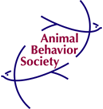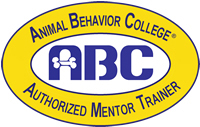One of the most frequent requests I get is from dog owners telling me that their dog needs to be better socialized. Their dog is growling, lunging, barking, snarling, hackles up when around other dogs and the assumption is that with increased contact, the dog’s behavior will improve.
People, that’s a total fallacy.
Your dog’s socialization window closed, technically, when he was around 16 weeks old. Although I would still argue that a young dog is actively learning and creating his identity in regards to how he interacts with other dogs, after the age of 2 it’s relatively safe to say he is who he is. Going to the dog park every day and forcing him to engage with other dogs will only create more problems. He’s ill-equipped to deal with a situation where he is overwhelmed and freaked out. What’s going to happen is he’s going to stutter and stumble his way through the exposure, possibly scaring other dogs and definitely scaring himself. Maybe he will shut down and appear to be handling it fine, but inside his stress hormones are raging and he’s a mess. On the other end of the spectrum, if he’s exploding with reactivity, he’s practicing a behavior you really don’t want him doing and he’s putting other dogs (and people, too, if he redirects that explosiveness) in danger.
So, what do you do with a dog that has poor social skills and can’t handle himself appropriately around other dogs? I understand the concept of wanting to socialize. You want him to have enough positive experiences that he gets that he’s ok and dogs are cool to hang out with. It would make so many things better. Off leash hikes would be an option, taking your dog over to a friend’s house would be ok, having that summer BBQ and saying, yeah sure, bring your dog! But that’s not who your dog is.
Step one is accepting the reality that your dog has a problem with other dogs and needs help. You have to start where you dog is, not where you want him to be. I know this sounds simple but, honestly, this is probably the hardest part. For many of us, our dogs are an extension of ourselves and we see their actions as a reflection on us. So, it’s embarrassing and uncomfortable to have THAT dog that is all special-needs and trouble. Well, like I said, he is who he is and the sooner you accept that, the sooner you’ll be able to get him on the road to better behavior.
From here, you have two options. You can manage the issue, which basically means keep him away from other dogs. Lots of folks do this and it’s not so bad. Your dog doesn’t need doggy friends. There is no developmental necessity dictating that your dog needs friends. He needs exercise, enrichment and connection. For most dogs, the connection is with their people. Connecting with other dogs is a truly personal and distinct trait. It’s not so different with people. As children, we are highly socialized and there’s a developmental purpose to it. We are taught how to behave in different settings, how to chat, how close to stand to a stranger versus a friend, proper greeting etiquette and so on. As we mature, we tend to hone certain skills based on personal preference. We settle into an identity as an extrovert or introvert. We have set friendships and reliable interactions. Sure, we can still pony up and behave well in strange situations, but we migrate towards our comfort zone. So, your adult dog is similar. Perhaps he likes puppies but dislikes adult dogs. He might be ok with dogs smaller than him but hates bouncy, huge Labs. It’s all personal. Of course, it’s usually based on past experiences. If your dog was mauled by a white dog, chances are he might be weird around white dogs. I’ll tell you though, a lot of that stuff is hard-wired. Highly sensitive or anxious dogs are pretty much waiting for a bad experience to happen to them so they have a reason to get weird about it. I’ve met really stable dogs that have had awful things happen to them and they bounce back fine.
Which brings me to the next step. Don’t feel guilty. Stop it. You didn’t create this issue or cause the problem. We all live life and things happen. Maybe you didn’t have the chance to do everything you wanted with him as a puppy or maybe you were naïve and allowed him to be in scary situations you didn’t realize would screw with his head. Let it go. Dogs are brilliant in this regard. They live in the present and they will believe you…whatever you say the rules are, they believe you. So take a deep breath and move along without that guilt saddled to your psyche.
For some, it’s a huge relief to know that it’s TOTALLY OK to have a dog that doesn’t like other dogs and you don’t have to fix it. All you have to do is prevent damage from occurring and that’s pretty easy. Putting your dog away when your friend brings her new puppy to visit, things like that. For other folks, they really do want to be able to go for that off-leash hike and they are willing to do the work to reach that goal.
That’s assuming it’s a reasonable goal. You’ve got to understand that some dogs will never, ever be ok with other dogs. Whether it’s breed or past-trauma or just that he’s wired wonky, it’s possible that his glass ceiling is set pretty low and doggy love just ain’t gonna happen.
So, with that being said, most dogs can make a considerable amount of progress with a good behavior modification plan. You need to be ready to work hard, be consistent and be patient. You need to understand that by the end of this, you will be an amazing dog trainer and know more about canine body language than you ever knew was possible. You will probably be fluent in operant and classical conditioning. You will find clickers in your purse instead of pens. So, you have to like training. Because good behavior modification takes good training and planning. It doesn’t happen on its own. I often use the analogy of prepping for a marathon. You need to cover all of your bases from cleaning out the pantry so you don’t sabotage yourself with those Twinkies to making sure you have the right shoes…to actually running every day until you can do the marathon. It’s not magic and it’s not rocket science, and that’s good news because it means anyone can get the job done as long as they have a good plan and guidance. The bad news is that, on the same token, there are no short cuts.
If you’ve made it this far and you still want to plug ahead and do the work, congratulations. You are part of a small minority of people, we call ourselves the 3AM Dog Walkers Club. Your reward for doing all this work is that, chances are, you’ll have an incredible bond with your dog and a closeness that you couldn’t have imagined. It’s awesome. It’s transformational, really. And, not-so-strangely, by the end of the process you probably won’t be nearly so concerned about your dog’s need to be socialized.
 Get our monthly newsletter packed full of helpful training tips!
Get our monthly newsletter packed full of helpful training tips! 







A couple of things. I’m not the dog owner who attaches my feelings one way or the other, my dog is who they are and it’s important, for me, to take them where I can and where I want on terms that make the most sense for myself and my pack. Don’t judge your pup or yourself, it is what it is. Just because you get the sneer or “the look” from others does not reflect on you as a pet owner. If you’re out there trying putting intention into your pets then IMHO your ahead of the pack.
The one thing I might add (and forgive me if I missed this in the article, damn Lyme Disease and my brain) is to pay attention to it all. I got a heck of lot right with my Adie Mae. After her rabies vaccination I saw a completely different dog, homeopathy helped but it’s been a llllooooonnnnggggg road with her and it will continue thusly. She can be around a lot of different dogs (I pet sit) but each one takes baby gates, time etc..
Nice article.
This is a very good article. I am going through this with my Tibetan Terrier. Bhutan was supposed to be my smarty pants obedience dog, but it became evident very early on that he was reactive. I have trained other dogs so I kept him with me, took him to new environments in a safe way, let him play off leash occasionally and only with a sibling or other Tibetan Terrier (they play well together) and there wasn’t any naughty behavior. As he matured his leash reactivity increased and I sought specialized training. It’s a whole new way of looking at behavior development. I am doing all positive, “look at that” counter conditioning, NILIF, redirection, and all in the most caring way. Once I truly understood Bhutan could not help or prevent his responses, it increased my empathy for him. Since I can’t take him to my own dog club’s group classes, we are training privately and on our own. Recently we begun nose work and he is amazingly confident. In the past year he has made great strides socially, but he will probably always scan the environment, as he has taught me to do. We still need about 20 feet between us and other dogs, and that distance may diminish, or may not. He definitely has more tools in his tool box and as we practice calming behavior in different settings, he is ever so slowly learning to tolerate more stimulation. I love this little boy to pieces and now, at nearly age 3, at home where he feels safe, he is exceedingly sweet and calm and assured. I am convinced meeting your dog where he is, accepting that, and progressing at the pace he can handle is the only way to go. It means no vacations for me, though, for several years. I wouldn’t trust anyone else to care for Bhutan and meet his needs. That’s hard. But we are learning and growing together. I realize I have a really great dog — just not the dog I had originally thought I would have.